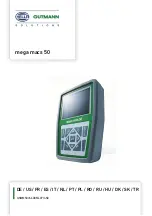
18
AN-16/
i
v
.2 i
Nput
M
odule
u
ser
G
uide
Connecting Audio
The are many ways to get audio into the AN-16/i v.2 Input Module for processing. Depending
on your application— stage, studio, broadcast, etc.—the types of signals and equipment
available will vary. This section will give examples of some typical setups that you can modify
to suit your individual needs.
Connections on the AN-16/i v.2 Rear Panel
There are two rows of balanced TRS connectors marked
In
and
Thru
on the rear of the AN-16/i v.2 Input
Module.
The audio in connections on the AN-16/i v.2 accept balanced or unbalanced ¼-inch cables. The AN-16/i v.2
can accept a wide variety of signal levels; gain settings are changed on the front panel of the AN-16/i v.2
per channel pair.
AN-16/i v.2 rear panel connections
The audio design of the AN-16/i v.2 allows you to connect it at virtually any point in your existing audio
system. The AN-16/i v.2 can accept audio coming from:
Mixing console main mix outputs
•
Mixing console
•
direct outputs
Mixing console
•
insert sends only
Mixing console insert
•
send and return loops
Mixing console group or bus outputs
•
Line-level output from mic
•
preamps
Line-level outputs from keyboards and other music devices
•
MP3, CD, or DVD players
•
•
Digital Audio Workstations (DAWs)
Computer sound cards
•
•
DSP effects processors
Video devices, cameras, etc.
•
The built-in audio Thru connections allow source signals to be connected to the AN-16/i v.2 Input Module
first before being connected to a mixing console to allow maximum patching flexibility.
















































